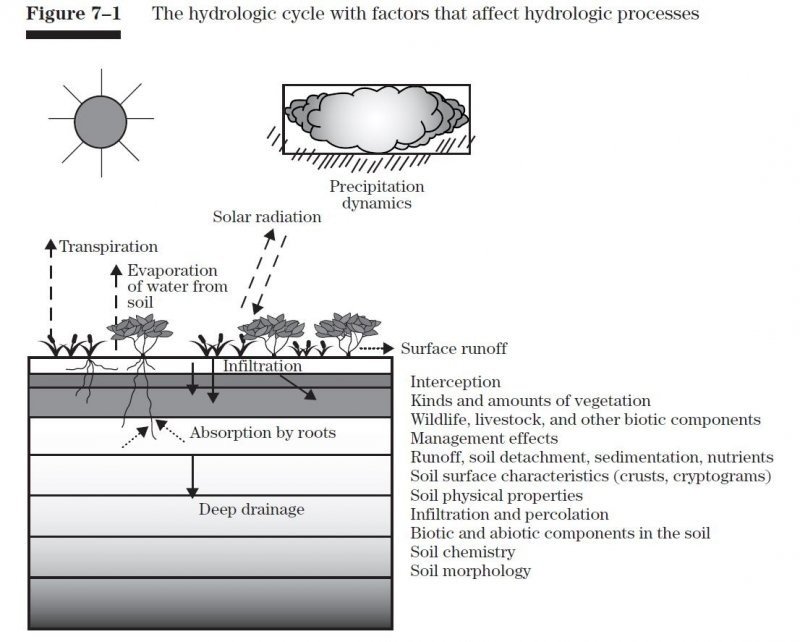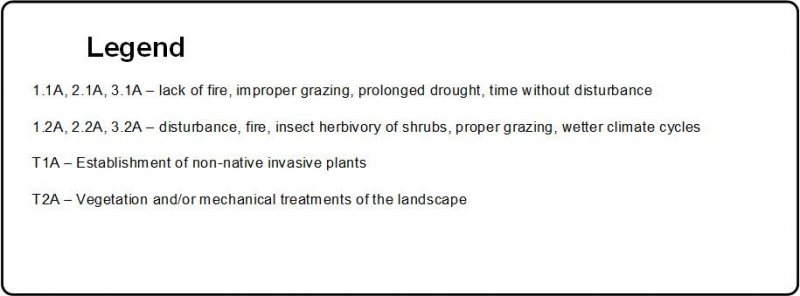
Natural Resources
Conservation Service
Ecological site R048AY016NM
Mountain Meadows
Last updated: 4/03/2025
Accessed: 12/19/2025
General information
Provisional. A provisional ecological site description has undergone quality control and quality assurance review. It contains a working state and transition model and enough information to identify the ecological site.
MLRA notes
Major Land Resource Area (MLRA): 048A–Southern Rocky Mountains
This area is in Colorado (76 percent), New Mexico (11 percent), Utah (8 percent), and Wyoming (5 percent). It makes up about 45,920 square miles (119,000 square kilometers). The towns Jemez Springs, Los Alamos, Red River and Eagle Nest, New Mexico, are in this MLRA. This MLRA has numerous national forests, the Carson National Forest and part of the Santa Fe National Forest in New Mexico. The Jemez, Picuris, Santa Clara, and Taos Indian Reservations are in this MLRA. Most of this area is in the Southern Rocky Mountains Province of the Rocky Mountain System. Small parts of the southwest corner and some isolated areas farther west are in the Canyon Lands Section of the same province and division. The Southern Rocky Mountains consist primarily of two belts of strongly sloping to precipitous mountain ranges trending north to south. Several basins, or parks, are between the belts. The ranges include the Sangre de Cristo Mountains, Jemez Mountains, and Tusas Mountains. Elevation typically ranges from 6,500 to 13,167 feet (1,980 to 1,039 meters) in this area. The Rio Grande is a National Wild and Scenic River in northern New Mexico, which is in the southern part of this MLRA.
The mountains in this area were formed mainly by crustal uplifts during the late Cretaceous and early Tertiary periods. The rocks exposed in the mountains are mostly Precambrian igneous and metamorphic rocks, which in many places are flanked by steeply dipping Mesozoic sedimentary rocks. Younger igneous rocks, primarily basalt and andesitic lava flows, tuffs, breccias, and conglomerates, are throughout this area. Representative formations in this area are the Silver Plume and Pikes Peak granites, San Juan Volcanics, and Mancos Shale. Many of the highest mountain ranges were reshaped by glaciation during the Pleistocene. Alluvial fans at the base of the mountains are recharge zones for local basin and valley fill aquifers. They also are important sources of sand and gravel.
The dominant soil orders in this MLRA are Mollisols, Alfisols, Inceptisols, and Entisols. The soils in the area dominantly have a frigid or cryic soil temperature regime and an ustic or udic soil moisture regime. Mineralogy is typically mixed, smectitic, or paramicaceous. In areas with granite, gneiss, and schist bedrock, Glossocryalfs (Seitz, Granile, and Leadville series) and Haplocryolls (Rogert series) formed in colluvium on mountain slopes. Dystrocryepts (Leighcan and Mummy series) formed on mountain slopes and summits at the higher elevations. In areas of andesite and rhyolite bedrock, Dystrocryepts (Endlich and Whitecross series) formed in colluvium on mountain slopes. In areas of sedimentary bedrock, Haplustolls (Towave series) formed on mountain slopes at low elevations and with low precipitation. Haplocryolls (Lamphier and Razorba series), Argicryolls (Cochetopa series), and Haplocryalfs (Needleton series) formed in colluvium on mountain slopes at high elevations.
LRU notes
This site is part of the RM-2 sub-resource area. This site is found on the west side of Sangre de Cristo mountains, Tusas Mountains (southern San Juan mountains) and Jemez Mountains.
Classification relationships
This ecological site is correlated to soil components at the Major Land Resource Area (MLRA) level which is further described in USDA AgHandbook 296.
Ecological site concept
This site occurs on basins and valleys and below seeps and springs on mountain side slopes. Drainages associated with the site are not dissected and allow the water to fan out. This results in a high water table and even some surface water in the spring and summer. Slopes are less than 5 percent. Elevation ranges from 7,200 to 9,000 feet above sea level.
The soils are deep and somewhat poorly drained with a high water table. Depth of the water table ranges from 0 to 60 inches. The surface soil textures are loam, silt loam, or clay loam.
Subsoils range from gravelly loam, gravelly clay, clay loam, silty clay loam, silt loam, to clay. The soil profiles are characterized by high amounts of organic matter and dark colors. Permeability is moderate to slow, runoff is medium, and water-holding capacity is high.
Soils characterized by this site are:
This ecological site used to have the ID number of R048BY006NM in RM-2 subresource area in 1982.
Associated sites
| R048AY011NM |
Subalpine Grassland Dry This site occurs on high mountain tops above and extending down into parks within the spruce-fir zone. Aspen groves and colonies of Gambel oak may be scattered throughout the site. The landscape ranges from rolling to steep with side slopes ranging from 5 to 45 percent. Elevation ranges from 9,000 to 12,000 feet above sea level. The soils are deep but may be high in surface cobbles and stones and give the impression of being shallow. Surface textures range from cobbly and/or gravelly loams and very cobbly sandy loam. Subsoils textures range from loam, clay loam and silt loams are are filled with rock fragments. Family particle size class is loamy-skeletal. This ecological site used to have the ID number of R048BY003NM in RM-2 subresource area in 1982. |
|---|---|
| R048AY012NM |
Mountain Loam Dry This site occurs on gently sloping to moderately rolling uplands below or ranging into the ponderosa pine-Douglas fir woodlands. It may occur on open parks within the true woodlands. Slopes range from 1 to 20 percent. Elevation ranges from 7,200 to 9,200 feet above sea level. The soils are deep. Surface textures are loam or silt loam with subsoils varying from gravelly loam. very gravelly sandy clay loam, extremely cobbly clay loam. clay loam, or loam. Permeability is moderate slow to moderately rapid. This ecological site used to have the ID number of R048BY004NM in RM-2 subresource area in 1982. |
Similar sites
| R048AY006NM |
Mountain Meadow The site occurs as lower lying drainageways, flood plains, swales or other depressional areas where extra moisture accumulates as a result of runoff from surrounding higher sites. A high water table is characteristic of this site particularly in the spring and a portion of the area may have open water during this season. Springs or seeps bring the water table to the subsoil or even to the surface, in which instance the site may colloquially be called a “cienaga”. Slopes vary from flat to gently sloping, not to exceed 5 percent. The exposure varies and is not significant. Elevation ranges from 7,000 to 9,500 feet above sea level. These soils consist of deep to very deep soils and poorly to very poorly drained. The surface texture ranges from a very fine sandy loam to a mucky silty clay and clay surface layers. They have an active water table, which varies from the surface to 3 feet below the surface. They are normally non-saline and have high organic content. These soils have moderate to moderately slow permeability. Available water-holding capacity is moderate. The effective rooting depth is 20 inches to more than 60 inches. |
|---|---|
| R048AY241CO |
Mountain Meadow This site occurs flood plains, stream terraces, drainageways, ephemeral streams, flood-plain step and depressions. This site has natural sub-irrigation. Slopes is between 0 to 12%. Soils are moderately deep to very deep (20 to 60+ inches). Soils are derived from alluvium from sandstone and shale, sedimentary rock, igneous, metamorphic and sedimentary rock, or shale. Soil surface texture is loam, silty clay loam, clay loam, clay, sandy clay loam or sandy loam with fine-loamy or fine textured subsurface. It has a typic aquic or oxyaquic ustic moisture regime. The effective precipitation ranges from 16 to 20 inches. |
Table 1. Dominant plant species
| Tree |
Not specified |
|---|---|
| Shrub |
Not specified |
| Herbaceous |
(1) Deschampsia cespitosa |
Click on box and path labels to scroll to the respective text.


